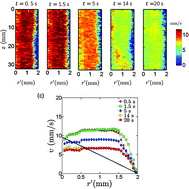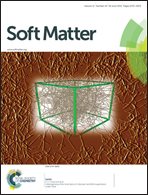Heterogeneous flow kinematics of cellulose nanofibril suspensions under shear
Abstract
The rheology of NFC suspensions that exhibited different microstructures and colloidal stability, namely TEMPO and enzymatic NFC suspensions, was investigated at the macro and mesoscales using a transparent Couette rheometer combined with optical observations and ultrasonic speckle velocimetry (USV). Both NFC suspensions showed a complex rheology, which was typical of yield stress, non-linear and thixotropic fluids. Hysteresis loops and erratic evolutions of the macroscale shear stress were also observed, thereby suggesting important mesostructural changes and/or inhomogeneous flow conditions. The in situ optical observations revealed drastic mesostructural changes for the enzymatic NFC suspensions, whereas the TEMPO NFC suspensions did not exhibit mesoscale heterogeneities. However, for both suspensions, USV measurements showed that the flow was heterogeneous and exhibited complex situations with the coexistence of multiple flow bands, wall slippage and possibly multidimensional effects. Using USV measurements, we also showed that the fluidization of these suspensions could presumably be attributed to a progressive and spatially heterogeneous transition from a solid-like to a liquid-like behavior. As the shear rate was increased, the multiple coexisting shear bands progressively enlarged and nearly completely spanned over the rheometer gap, whereas the plug-like flow bands were eroded.


 Please wait while we load your content...
Please wait while we load your content...